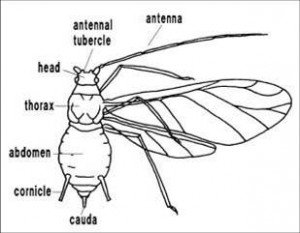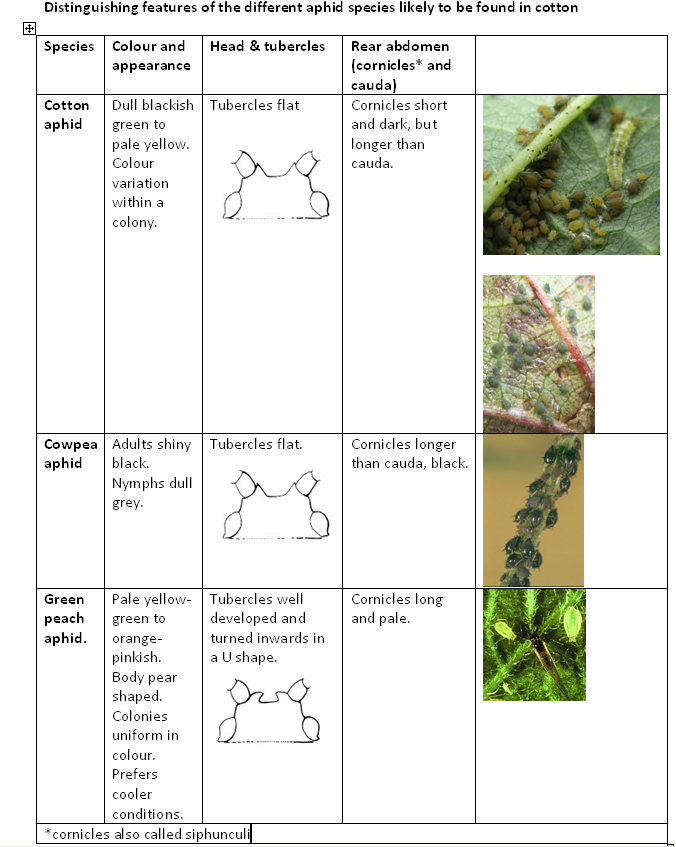As the cotton season gets underway aphids are starting to be detected in crops, on ratoons, volunteers and weeds. Last season, there were some regions where Cotton Bunchy Top (CBT) was detected in crops towards the end of the season. To assess and manage the risk of yield loss caused by CBT, and minimise the difficulties of controlling insecticide resistant cotton aphids it is important to i) be able to correctly identify aphids in the crops and ii) consider how early season infestations (in crop and on nearby weeds) will be managed. <–more–!> Identifying aphids in cotton There are a number of species of aphid that will establish in cotton, Cotton Aphid, Cowpea Aphid and Green peach aphid are the most common. Cowpea and green peach aphid will colonise cotton, but tend only to persist in cooler conditions. Cowpea aphids were present in cotton crops in Emerald in early November this year, but numbers have since declined. We have received samples of cowpea aphid and cotton aphid from cotton on the Downs this season. Key features used in the identification of aphids are illustrated below. Use a x10 hand lens to examine the aphid to see the tubercles,cornicles and cauda features.  Illustration from aphid identification key: http://ipm.ucdavis.edu/TOOLS/KEYAPHID/typical.html
Illustration from aphid identification key: http://ipm.ucdavis.edu/TOOLS/KEYAPHID/typical.html 
- Identify the aphids
- Make an assessment of the level of infestation – % of plants with aphids. Look for aphids towards the top of the plant, at 3-4 nodes down from the terminal, under leaves.
- Mark, or record, infestations and revisit to determine if the population is spreading, increasing in size, and whether there is beneficial insect activity.
- If the infestation is spreading – this is the point at which to make a decision about control.
- Don’t wait until populations are out of control (>30% infestation) to act.
- Suppression of populations for example with a spray oil, may be sufficient to minimise the risk of spread and in situations where there is a high risk of CBT transmission.
- Large influxes or rapidly spreading infestations may warrant the application of pirimicarb.
- Early season spray decisions should take into consideration the potential disruption to beneficials that contribute to the subsequent control of aphids, SLW and mealybug.
CBT and aphid infestations
- Crops at high risk of CBT are those close to reservoirs of CBT and aphids (weeds, particularly malvaceae species; ratoons).
- Early infection will result in more severe symptoms.
- However, do not start spraying aphids at first appearance in the crop. Large influxes of cotton aphid from CBT reservoirs represent a larger risk, in terms of CBT transmission, than a slow influx over a longer period of time.
- CBT symptoms will not appear in the crop for up to 8 weeks after transmission – don’t act on symptoms.
Article by Melina Miles
